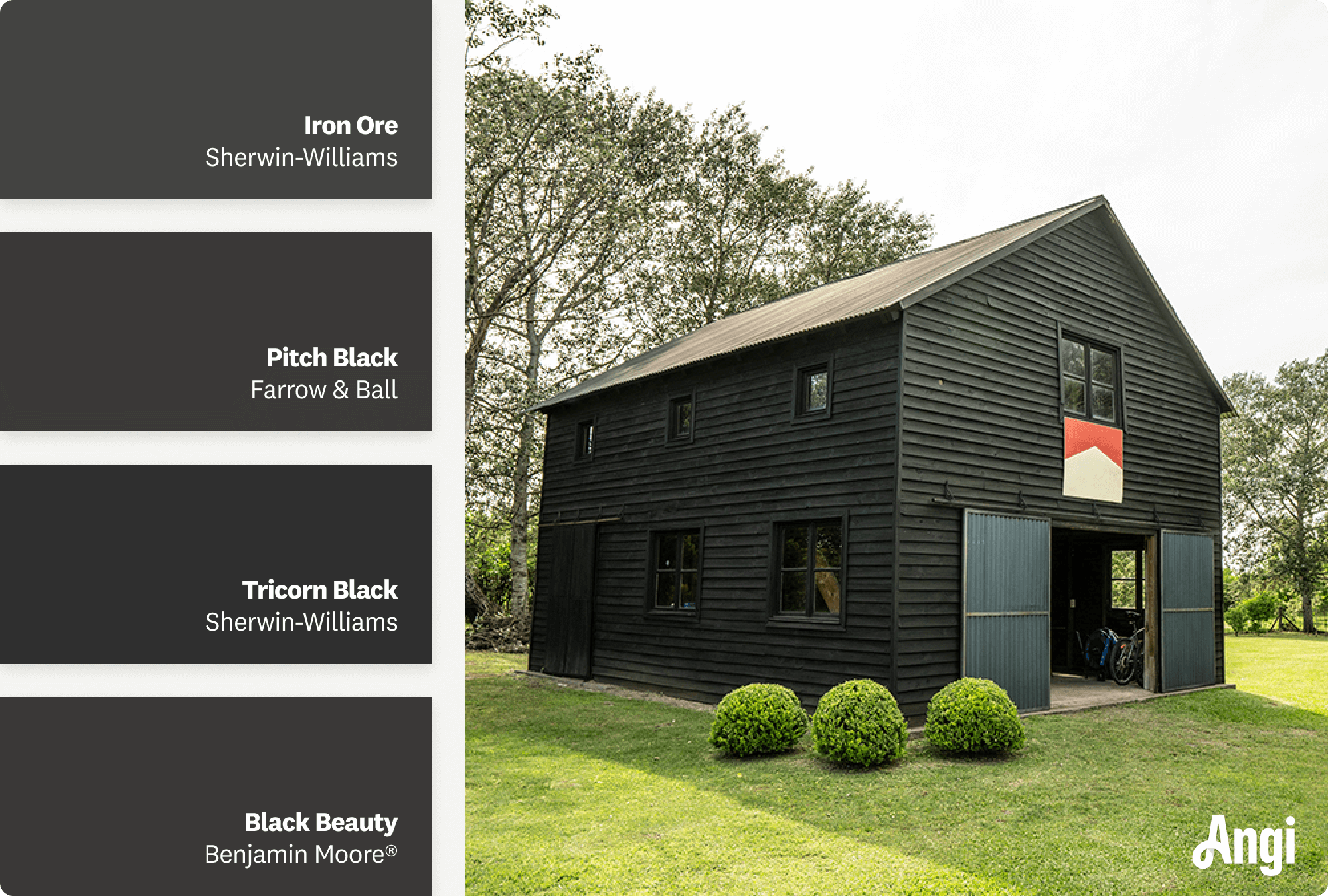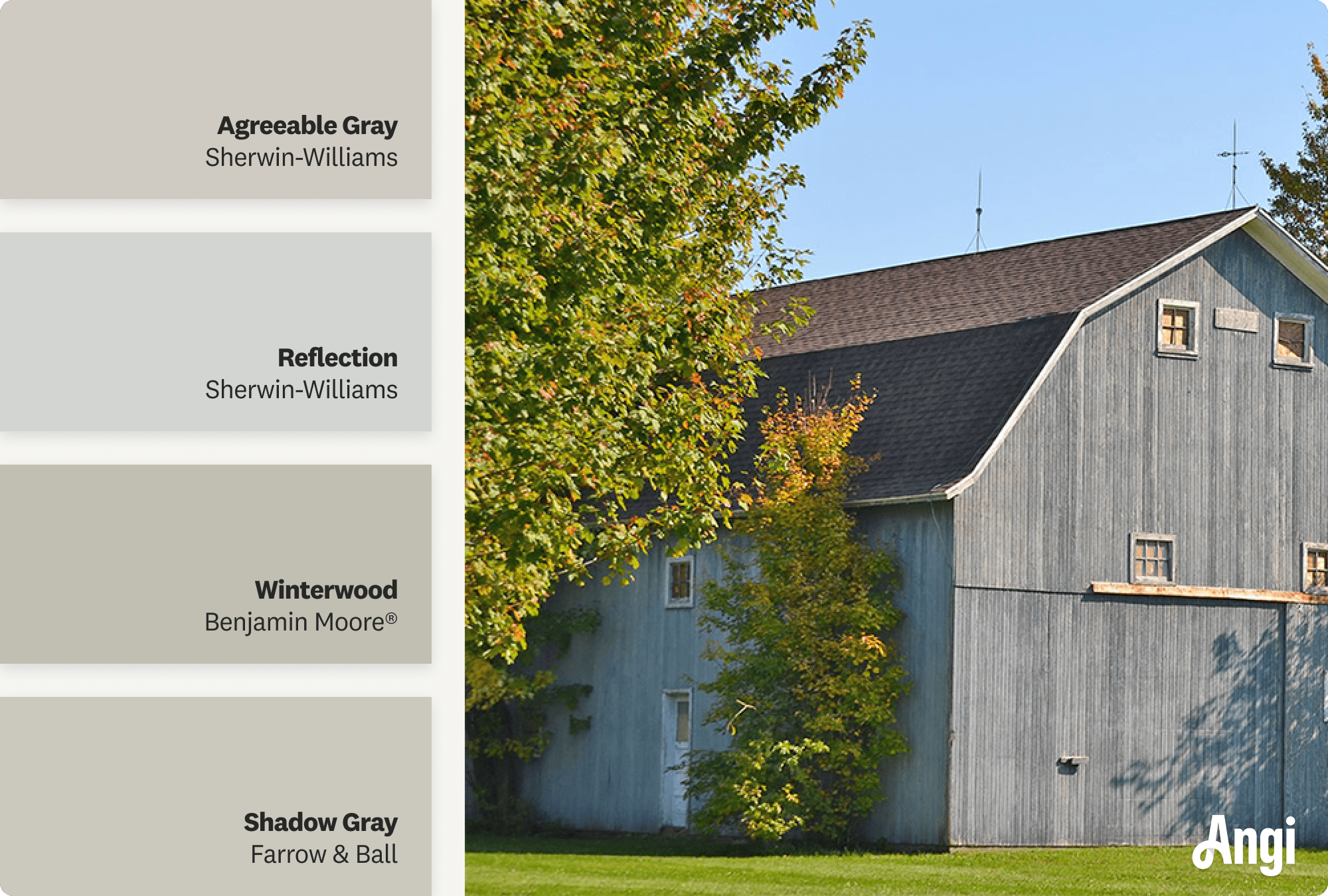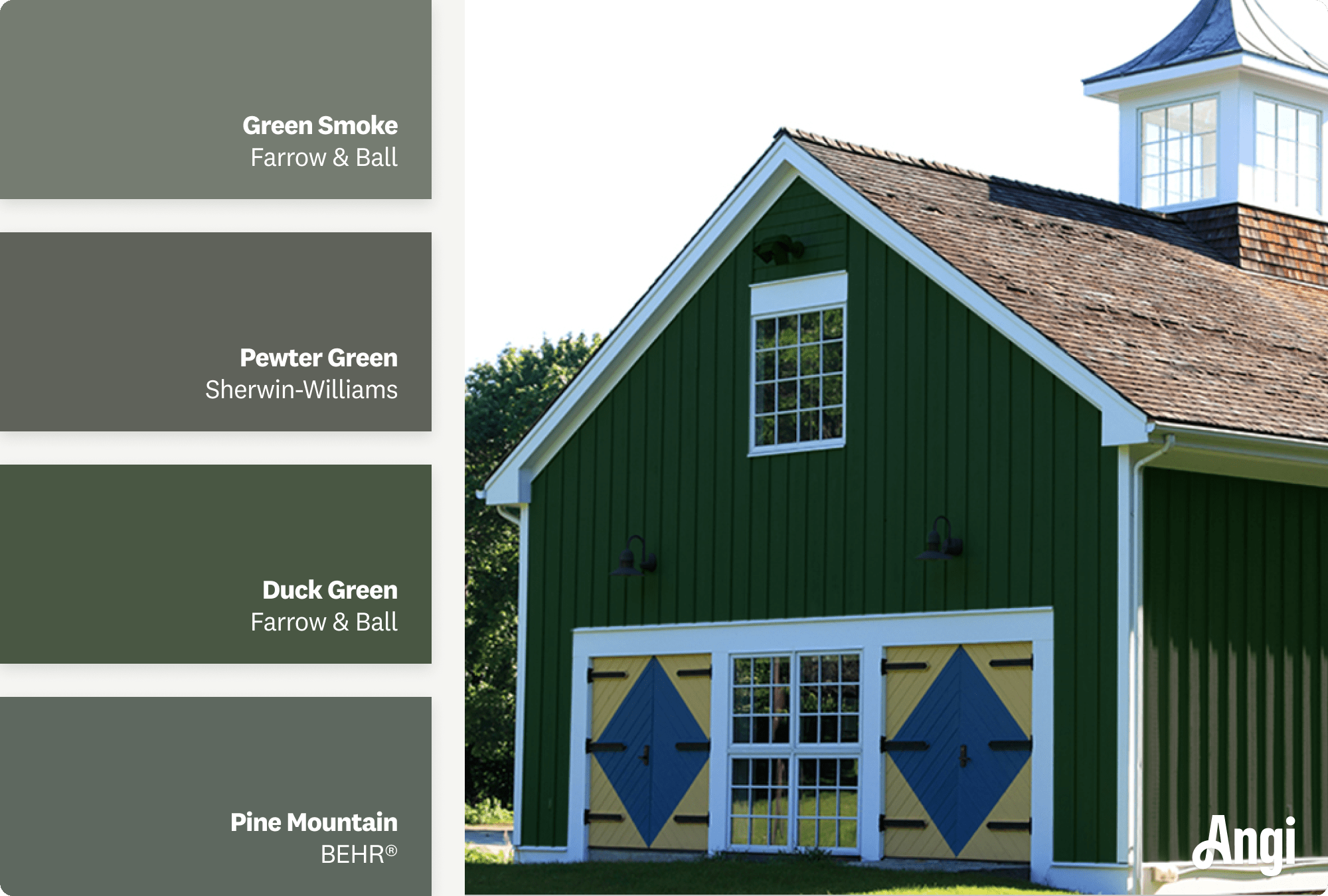
Painting your gutters can give your home the fresh finishing touch it needs to look its best. This guide walks you through the cost to paint gutters.
Paint your way to a bold and beautiful barndominium


Hire a professional painter to help you choose the right color and paint type for your barndominium, based on its style, location, and materials.
Black is a modern favorite—it's low maintenance and ideal for humid climates.
Classic red remains a timeless choice, nodding to the traditional barn aesthetic.
Neutral tones like white, beige, and gray can work well too, depending on your overall design goals.
Don’t forget to factor in your roof color—choosing a contrasting shade can make the entire structure stand out.
As more and more homeowners have made dramatic changes in how they use their homes, multipurpose spaces like barndominiums are on the rise; they offer the flexibility of added living space, the option of a home office, or the ability to create one epic bonus room. Choosing the best exterior paint color for your space will ultimately come down to personal preference; however, if you’re looking to follow trends, paint your space one of these popular barndominium colors.

Black has been gaining steam in the past few years—not just as a paint color for traditional homes but also as a barndominium color scheme. It’s not only sleek and sophisticated, but it’s relatively low-maintenance. It’s more appealing than, say, white to the homeowner who lives in a humid climate that sees a lot of mold, dirt, and pollen and might find themselves needing to repaint every other year.
Recommended colors:

If you want your barndominium to look more traditional and less modern, you may pick a popular farmhouse paint color, like red instead. A fire-engine red looks good with a matte black or pure white trim, though if your design style trends more toward earth tones, you may opt for a paint color that’s earthy and reminiscent of clay and terracotta.
Recommended colors:

There’s something so timeless and elegant about a white facade, especially when painting a barn; you can’t beat a pure white paint when it comes to elegance and versatility. White paint comes in an array of hues, some warmer with yellow undertones and others cooler with a bluish tint. A white barndominium will require more regular paint touch-ups, but the brilliance of the color is worth it.
Recommended colors:

Beige paint is a terrific vessel to channel the timelessness of white without being so aggressively bright. In addition, it elegantly bounces off of warm green landscape colors, especially those that veer more olive in tone. Beige can run from peach-based shades to ones that are more tan, like a milky café au lait.
Recommended colors:

There’s nary a scenario when a structure does not look good painted gray, and a barndominium is no exception. Gray paint runs the gamut of deeper, almost charcoal hues to greige—a mix between gray and beige—to the lightest of foggy, cloud colors that can appear almost white on a paint chip.
Recommended colors:

Muted shades of olive or sage green paint really make a barn blend in with its natural surrounds. Choosing an earth color like sage fuses the structure to the landscape and is a good choice if you want the building to disappear—or you could go for a deeper hue on the color wheel like a forest green to make your barndominium stand out against a clear blue sky.
Recommended colors:

Blue is a widely used exterior color and more homeowners are picking it for their barndominium for good reason: The color pops and also fades seamlessly in the sky, creating a natural ombre-like effect. For more drama, go brighter toward the cerulean or cobalt blue end of the color spectrum while, if you’d rather have the structure blend in with the heavens entirely, opt for an ultra-light blue.
Recommended colors:
The primary exterior color will be underscored or emphasized by the colors and details around it, so consider the bigger picture of your color scheme before deciding what hue you’ll choose for your barndominium.
If your roof is a dark color, you might not want to paint your exterior in the same vein, unless you’re aiming for a sleek, monochrome look. Consider selecting complementary colors that allow each element to stand out instead. For instance, gray roofs can be beautifully paired with white barns, while green roofs harmonize nicely with beige or greige barns.
Select a trim color that works with the primary barn color as well as the roof and stonework. Many people choose to paint the trim a similar or identical color to the roof for uniformity, and it’s advisable that you stick to a maximum of four colors for your barn so things don’t get too overwhelming. A beige trim against a dark blue or gray barn can give a modern look, or bright white trim with a saturated blue or green can be striking.
If you plan to resell your home in the near future, keep your color selections traditional. Many buyers want to see a potential home as a blank slate, a place that they can customize to their liking. Sticking to classic, neutral color options is a great way to let their imagination run wild, and help you go from For Sale to In Escrow.
Get the largest paint samples you can so you can get a good sense of what the colors will look like next to the stonework and from a distance. Remember to look at the samples at different times of the day so you can see how they look in full sun and at dusk.
When deciding on a color scheme for your barndominium, take some inspiration from the colors used in your neighborhood. Observing the color choices of your neighbors can help you gauge the local style and aesthetic. If you notice that most people in your area are opting for neutral tones, it might not be the best idea to paint with Barbie pink. While it's important to add your personal flair and style to your barndominium, it's also essential to be considerate and respectful of your neighbors' preferences.
Kristin Luna contributed to this article.
From average costs to expert advice, get all the answers you need to get your job done.

Painting your gutters can give your home the fresh finishing touch it needs to look its best. This guide walks you through the cost to paint gutters.

Sandblasting is a powerful method to remove paint, primer, and other coatings from hard surfaces. Learn the cost to rent a sandblaster and the factors involved.

The cost to stain cedar siding largely comes down to the labor required. Learn how you can keep your costs down for materials, and when hiring a pro.

Discover the cost to paint a commercial building exterior, including average prices, key cost factors, and tips to help you budget your next project.

Increase your curb appeal by taking your chain link fence from dull to bold with fresh paint. Here’s how to paint a chain link fence to keep it looking great.

This guide offers inspiration on how to choose a roof color for a red brick house. Use one of these color suggestions to achieve a new look for your home.